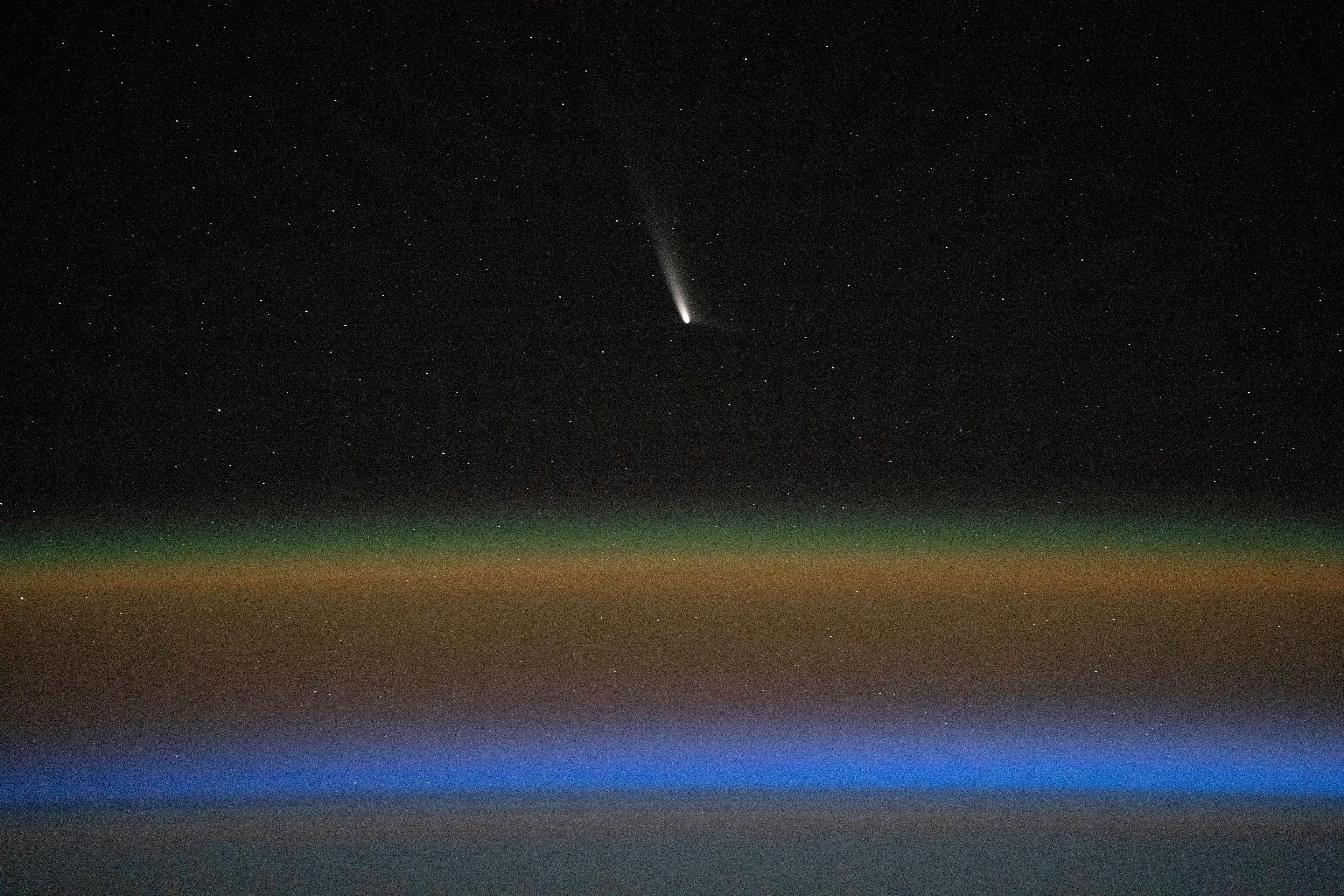
Updated on Oct. 14, 2024, at 5:25 p.m.
There will be a rare object in the skies over Colorado this week. Comet Tsuchinshan-ATLAS will be visible just over the western horizon shortly after sunset.
Astronomers say the comet was last visible from Earth about 80,000 years ago when Neanderthals roamed the planet. Scientists in China and South Africa spotted it within about a month of each other in early 2023.
Astronomer Doug Duncan, the former director of the Fiske Planetarium at the University of Colorado Boulder, spoke with Colorado Matters senior producer Michelle P. Fulcher.
According to Duncan, people might still have a chance to see this rare comet. It will be around for the next couple of weeks but will become increasingly dim. The full or nearly full moon will interfere with the view soon.
This interview has been edited for length and clarity.
Doug Duncan: The professional astronomers have been watching as it gets closer and closer to the sun and the Earth to see how bright it would get. The good news is, as the comet came from the depths of space, before it went around the sun, it was visible in the Southern Hemisphere. And our colleagues down in the south have said the view is great – a big long tail, a very, very impressive comet. So unless the comet melted too much or broke up going around the sun, we expect that as it appears in the northern sky in the next few evenings, it should have a beautiful tail stretching across the sky.
The biggest thing that will prevent a good view of this comet is probably not the comet itself. It's your neighborhood lights. You want a good view of the comet, you’ve got to get away from the lights. Number two, because it's so close to the sun, it's visible right after sunset. It's not very far above where the sun goes down, so you don't want to be blocked by the mountains. If you live right up against the Rocky Mountains and you don't see where the sun sets, you're not going to see the comet. Where I live in Boulder, there's a nice convenient mountain called Flagstaff, and I'm going to just drive 15 minutes and I'm expecting to see a beautiful long comet tail.
Michelle Fulcher: Am I looking north? South?
Duncan: It's going to be right where the sun has set and this time of year, the sun sets almost exactly in the west. So if you face west, what you expect to see is the tail of the comet, which always points away from the sun, sticking up into the sky right where the sun went down 15 minutes or half an hour before. Now, don't confuse a comet with a meteor. They both have a tail, but a meteor streaks across the sky in a few seconds. A comet is going to be in the sky for many days or even weeks.
Fulcher: How far is the comet from Earth?
Duncan: It's roughly the Earth's distance from the sun. So it's not very close. On the other hand, compared to where it came from, it's come closer and closer. That's why it's so favorable to see it this week.
Fulcher: Where did it come from?
Duncan: Measuring the comet's orbit, believe it or not, it came from a thousand times farther away than Pluto. We think that way out in space, a good fraction of the way to the nearby stars, but still associated with the sun, is a big cloud called the Oort Cloud. So apparently way out there, way beyond Pluto, is a cloud of comets. If something disturbs them and changes their orbit, then they can come in close to the sun, close to the Earth. And that's what's happened now.
Fulcher: So it'll be visible this weekend. What are likely to be the best days?
Duncan: We don't know which is going to be the best night or nights for seeing the comet.
You see, each night it gets further from the sun, it gets a little bit fainter. However, it's higher in the sky. Now, that means you can look at the comet when the sky is nice and dark. By far, the most beautiful view of a comet is when the sky is black behind the comet. If the sky still has twilight and is kind of gray, or if it has city light pollution, you may see the comet, but it won't be as spectacular. So I think it's quite possible that the best nights will turn out to be at the end of the weekend or early next week.
Fulcher: People want to take pictures of everything these days, but this sounds like it would be tough to do.
Duncan: I've got really good news. Modern smartphones – I have an iPhone 14 Pro Max, something like that, something like a Pixel or an Android phone that's pretty modern, all have a night mode. They actually take a time exposure. They have typically three seconds where they're gathering light and they make a brighter picture than even your eyes can see. So if you have a phone like that, bring it with you. Make sure it's on the night mode, hold it as steady as you can, and you might get a spectacular picture of this comet.
Editor's note: Updated with clarification on how long the comet might be visible for.









